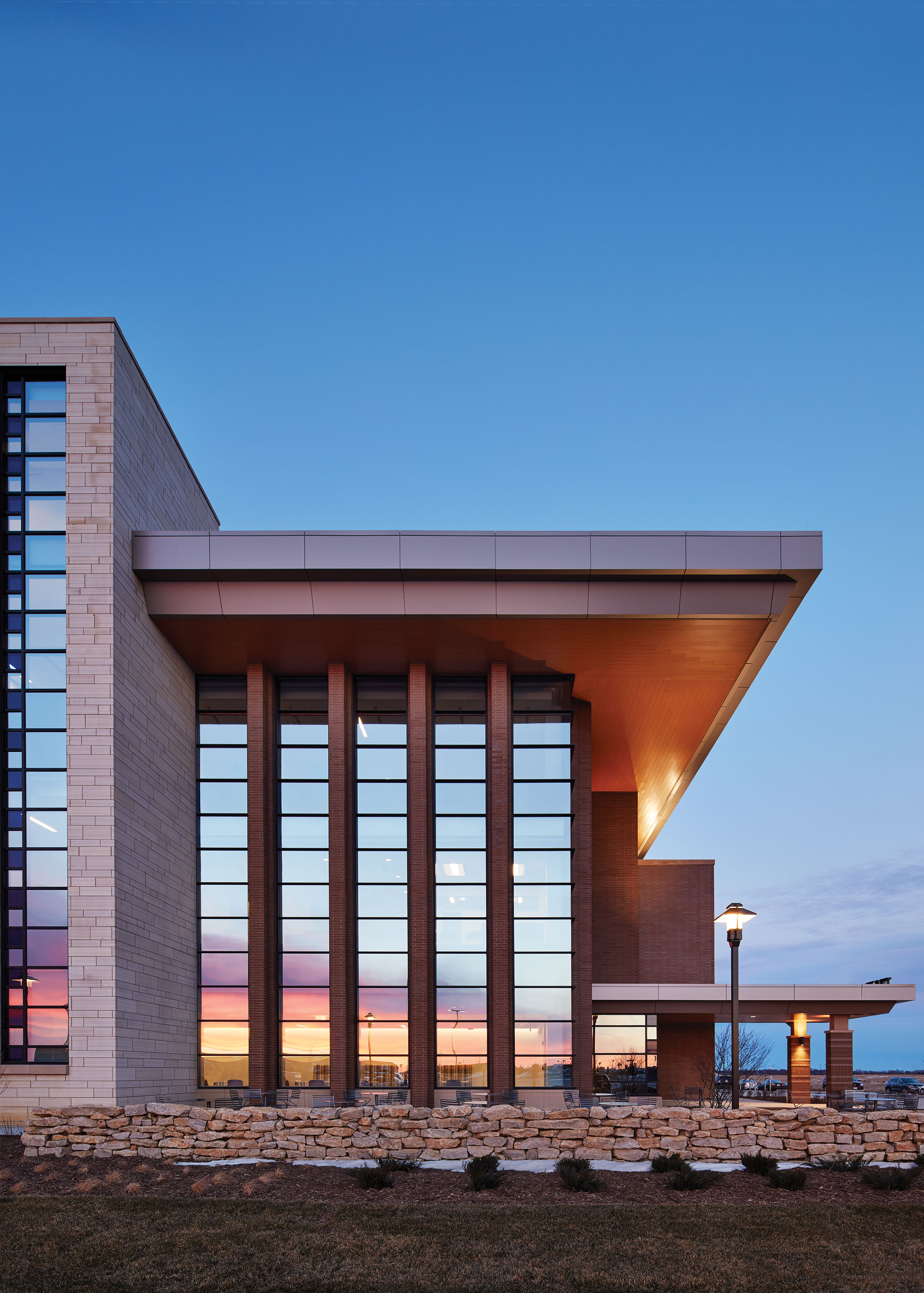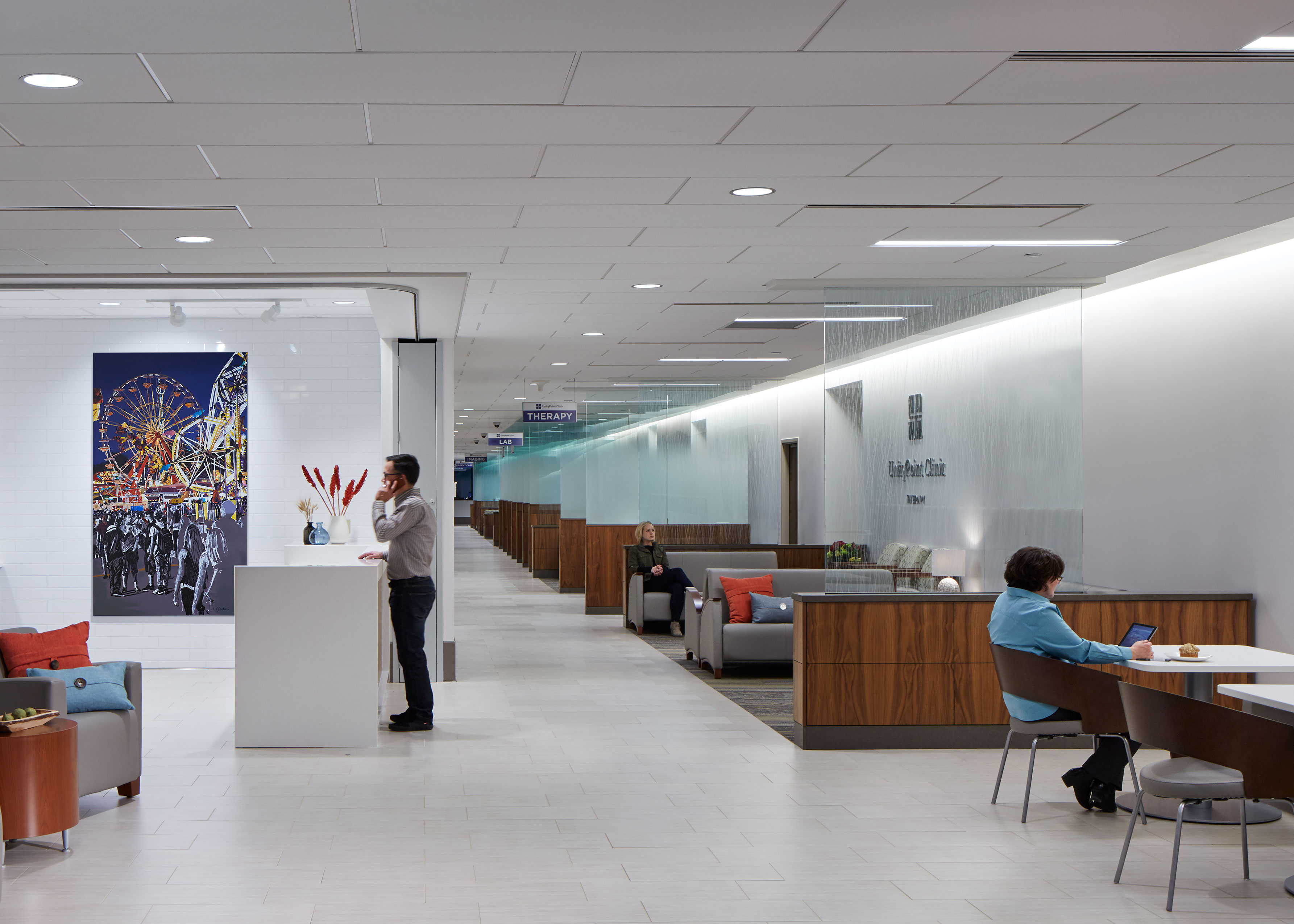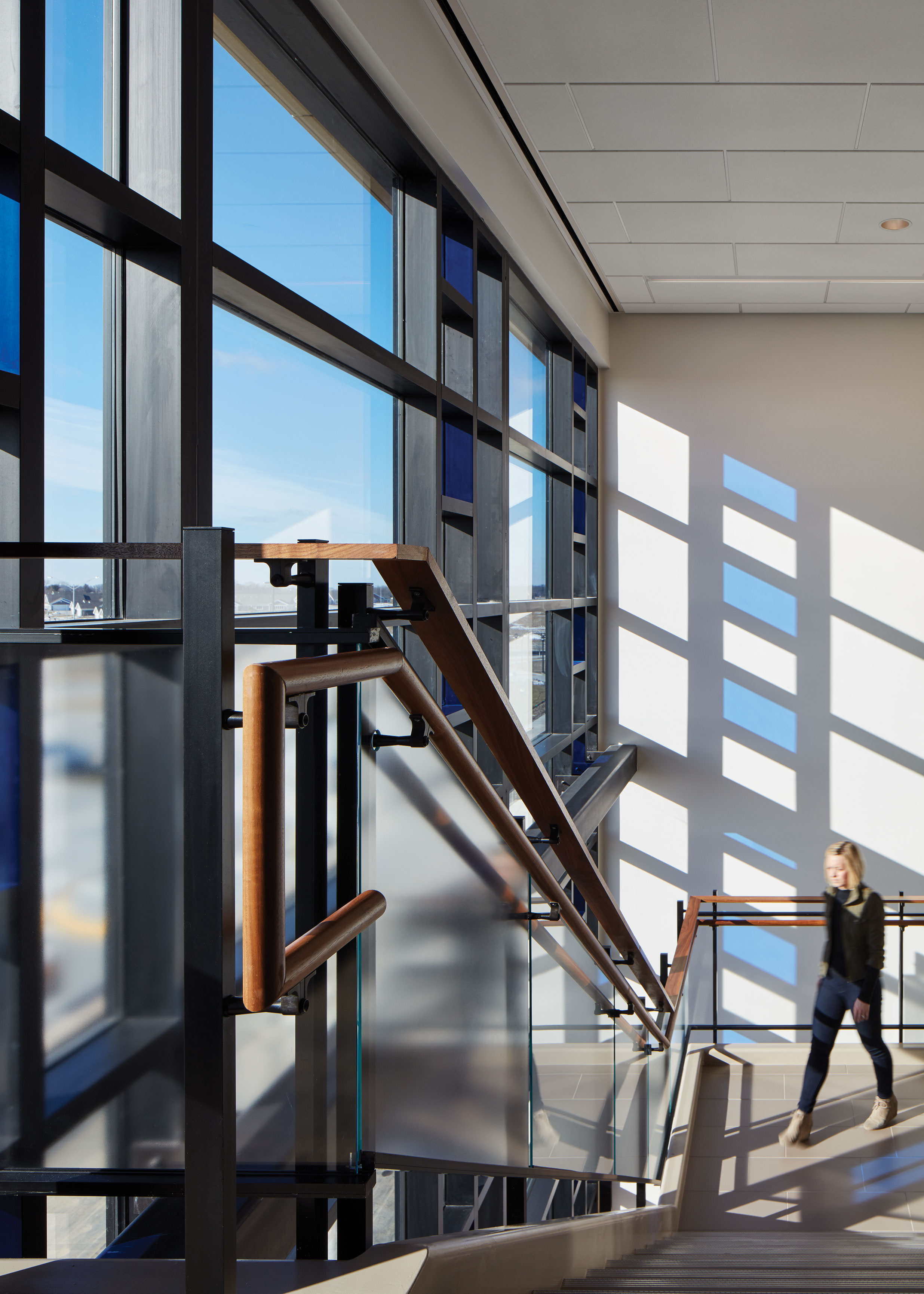When HGA Architects and Engineers was tasked with making a large medical facility feel intimate and personal, they focused on two things—repetition and nature.
The center also had to fit into the Prairie-style aesthetic around it. “We studied Prairie School architecture in depth and realized that a three-story, 90,000-square-foot Prairie-style inspired building would be a challenge,” says HGA’s Donovan Nelson, the architectural design lead. “The success of marrying the Prairie-style aesthetic with the size of the building would come down to one thing: scale.”
Flanking the three entry vestibules at UnityPoint Health – Prairie Parkway are blue glass panels, echoing the stained glass patterns of Prairie-style architecture. The motif carries through to the stairs, waiting rooms, and staff spaces. The design of the $30 million multi-specialty campus—with services ranging from ob-gyn, pediatrics, and family medicine to urgent care, radiology, and behavioral health—is open, bright, and warm. You’ll even find regional art on display.
The biggest challenge facing today’s health care designers is making a space that isn’t cold and intimidating, says HGA’s Christine Guzzo Vickery, interior design lead. The Cedar Rapids, Iowa, facility proves it can be done, starting with floor-to-ceiling windows in public areas so light streams in. The natural light and reflections of the blue glass bounce around in the space to create a whimsical feel. To save energy, daylighting controls automatically dim electric lighting when enough natural light is available.
Then there’s the proximity to nature, also helped by the windows. “We made sure that no matter visitor or staff, there is always a connection to the landscape,” Nelson says, adding that floor-to-ceiling windows also make up the back of house spaces. “These windows bring light in and invite views out to the surrounding natural landscape.” Walking paths and patio spaces abound, too.
HGA also incorporated green features like low-VOC paint, low-VOC adhesive, and reduced formaldehyde in its design and used local materials like local stone for the fireplace and Iowa walnut for the interior. “The movement today is towards inspiring wellness, not simply designing a place for sick people,”
Vickery says.
StruXture Architects also worked on this project.
 Photo by Corey Gaffer Photography
Photo by Corey Gaffer Photography
Prairie School–style architecture
Made famous by Frank Lloyd Wright, Prairie School–style architecture is evident by its horizontal lines and restrained decoration.
Vertical brick piers
Upright supports for a structure. The exterior of UnityPoint Health – Prairie Parkway incorporates overhangs and vertical brick piers to help provide natural shading to the east, west, and south facades of the building.
 Photo by Corey Gaffer Photography
Photo by Corey Gaffer Photography
Medical home model
This facility is designed as a medical home model, where multi-specialty providers come together with the patient to look at a comprehensive care plan, rather than multiple providers each in their own clinics presenting plans to the patient. The medical home is patient-centered, comprehensive, team-based, and focused on quality and safety.
 Photo by Corey Gaffer Photography
Photo by Corey Gaffer Photography
Central corridor
Each clinic area at UnityPoint Health – Prairie Parkway has a central corridor that links the clinics together. The design includes floor-to-ceiling windows to bring natural light into the space and a view of the landscape outside.
Daylighting
Using windows or other openings to allow natural light to provide internal lighting, maximizing visual comfort and reducing energy use.

